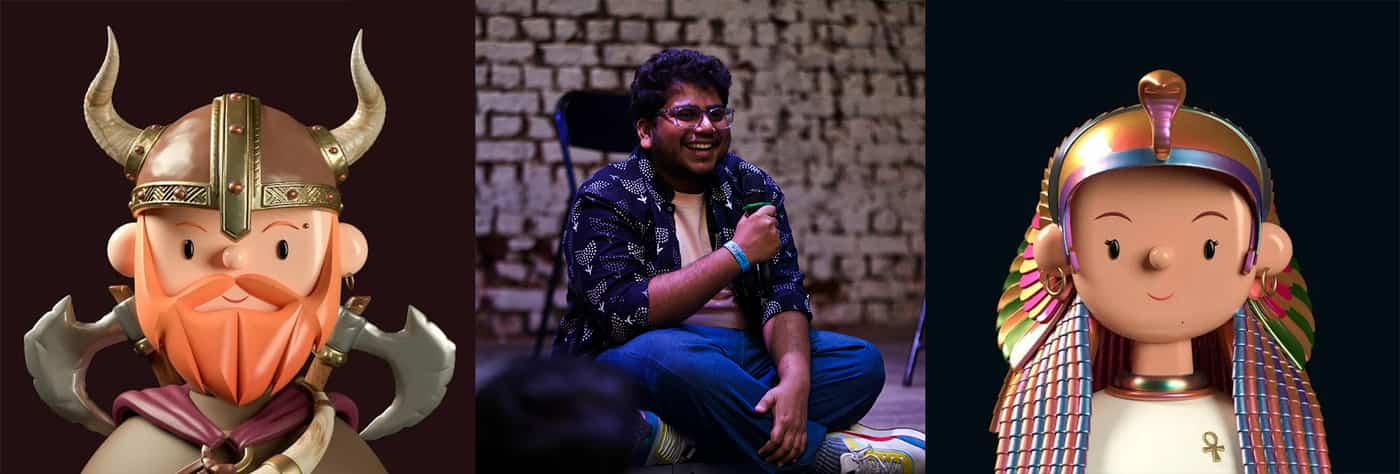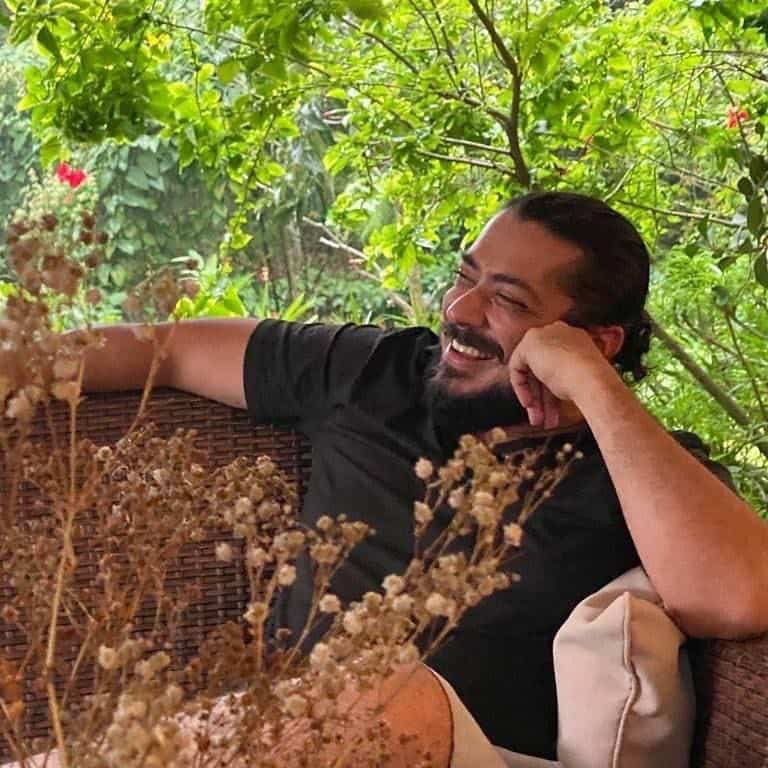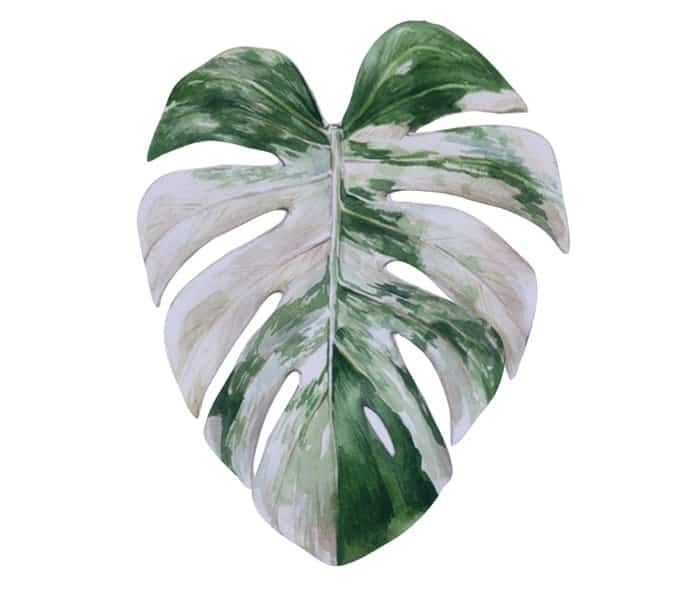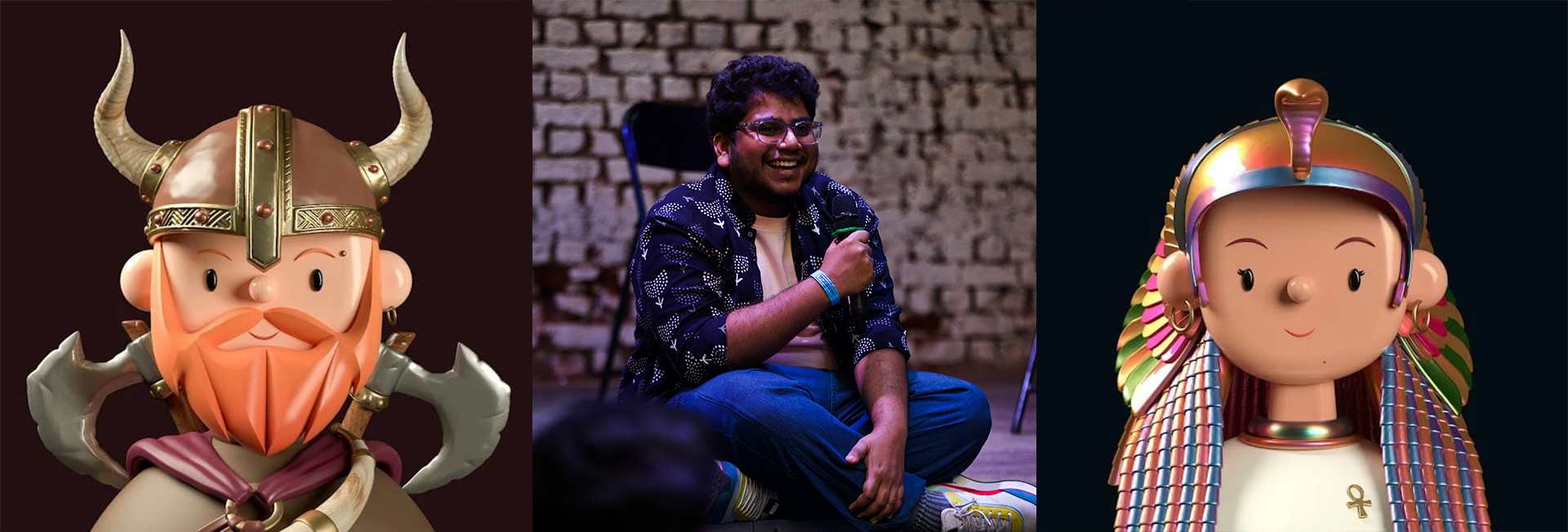The making of an NFT collector
By Bhanuj Kappal | May 4 2022 · 14 min read
Despite risks, collectors remain bullish on the potential for NFTs to revolutionise the art world, in ways both predictable and unpredictable
At the beginning of 2021, the non-fungible token (or NFT) was a bit of internet esoterica of little interest to most people in the art world—or anyone not involved in the world of cryptocurrency for that matter. Then, in March, Indian-born crypto investor Vignesh Sundaresan (aka MetaKovan) bought an NFT of a collage by digital artist Beeple for $69 million at a Christie’s auction, making it the first piece of purely-digital art sold by a major auction house.
Other high profile sales soon followed. The same month, 18 year-old Las Vegas artist FEWOCiOUS sold a piece for $550,000. A set of nine CryptoPunks NFTs by Larva Labs later sold for $17 million. Established contemporary artists soon got in on the action, with Damien Hirst dropping an NFT collection last September. With over $10 billion in sales over four years on just one platform (OpenSea), NFTs have become a rather buzzy buzz word. Collins Dictionary even picked it as their word of the year for 2021.
Many of the big players in the traditional—or ‘analog’—art scene are joining in on the digital art gold rush, with an eye on the thousands of potential new buyers flush with crypto cash. Sotheby’s has launched its own platform dedicated to digital art collectors, called ‘Sotheby’s Metaverse’. Galleries such as Pace have followed suit, launching their own digital art platforms. There’s even a CryptoPunk NFT in the collection of Miami’s Institute of Contemporary Art.
The incredible hype around NFTs—and its accompanying rhetoric of a radically open and decentralised Web 3.0—has already led to a bit of backlash. Detractors point to the preponderance of scams, the volatility of the market (there have been two crashes already since the Beeple sale) and environmental concerns around the underlying blockchain technology.
But away from the battles being raged on Twitter and YouTube between crypto-prophets and crypto-sceptics, people from all over the world are investing money and time into NFTs, collaborating to build a parallel industry that could fundamentally alter how we think of buying, selling and determining the value of art.
Turning abundance into scarcity
NFTs have been around since at least 2014, when artist Kevin McCoy minted a video of his wife on the blockchain and sold it to tech entrepreneur Anil Dash for $4. By 2017, NFT projects like CryptoPunks were regularly being traded on platforms like Ethereum. That’s where Dheeraj Shah, host of the Web3 With Dhee podcast, first got introduced to the concept.
“When I first heard about [NFTs], I was like this doesn’t make any sense,” says Shah, who has been involved in the crypto space intermittently for a decade. “People were spending ridiculous amounts of money on buying these digital images.”
Intrigued, Shah invited a number of pioneers in the NFT space onto his podcast—including Twobadour—to find out more. “Their perspective on this space was completely different from what you read in the media,” he says. “The depth of their vision was crazy, and I felt like I needed to jump down this rabbit hole.”
Shah started buying up NFTs from collections like Cool Cats and Pixel Vault, eventually adding almost 200 pieces to his collection. But he wasn’t thinking of it in terms of buying art. His initial buys were profile picture projects (PFPs) or other utility projects where the token gave you some form of access or experience along with a piece of digital art. The idea, he says, was to explore the space and understand the underlying technological and behavioural dynamics.
Angad Chowdhry, the founder of Singapore technology firm Quilt.AI, was also drawn to NFTs by technological rather than artistic interest. Like Shah, he had been dabbling with cryptocurrency since the early 2010s, and was impressed by the opportunities opened up by the blockchain technology. Chowdhry was already what he calls a “meatspace art collector”, with a collection of analog art that includes pieces by the likes of Salvador Dali. So, locked in at home during the pandemic, he decided to dive into NFTs as well.
“In the world of digital abundance we live in, there is no space for lack,” says Chowdhry, explaining the conceptual appeal of art on the blockchain. “Everything is infinitely reproducible [...] and thus fundamentally value-less from a certain perspective. This was the first time that you could introduce a sense of lack in the digital world. And from a Lacanian perspective, lack is what triggers desire. So it was philosophically very exciting for me.”
Chowdhry’s initial strategy was to invest in early technological projects, or otherwise go to OpenSea and buy anything that was "cheap and good on the eye." The transition from tecno-philosophical experimenter to serious NFT collector happened with CryptoMories, a collection of 10,000 individual skeletons inspired by the Latin saying “memento mori.” Buying a CryptoMori not only gives you ownership of the artwork and an entrance to the community, each token holder will also get free access to mental health counselling.
“That’s where I really understood what it means to have a community with a purpose and a mission associated with the art,” says Chowdhry, who suggests thinking of an NFT not as an object but as a “key”, one that can grant you access to a wide range of communities, utilities and experiences. “Most of my collection is now in this space. What experience does this [NFT] unlock? Does it unlock new conversations, ideas, opportunities?”


Dheeraj Shah started buying up NFTs from collections like Metahero and Pixel Vault, eventually adding almost 200 pieces to his collection. Featured here are the Cleopatra Toy Face and Viking Toy Face by Amrit Pal Singh from Shah's collection.
Moving towards convergence
Most of this activity, though, is happening independently of the traditional art market. The Sotheby’s and Christie’s auctions may capture the headlines, but most NFTs are minted, bought and sold on international platforms like OpenSea, Rarible, Makersplace and SuperRare, which have few, if any, links to the analog art world. The two scenes also cater to very different demographics, with the NFT scene dominated by young, male tech and finance entrepreneurs who were the early adopters of cryptocurrency.
But the rapid rise of NFTs in the past two years has led to increasing interest and participation from a more diverse set of artists, fans and buyers. Shah points at World Of Women, an NFT project and community aimed at empowering women and promoting diversity within the NFT art space. Pakistani-American artist Maliha Abidi’s Women Rise collection of 10,000 NFTs showcases the work of female artists, activists and scientists in an effort to inspire more women to enter the crypto industry. There’s also Crypto Chicks, a project aimed at empowering women within Web3. The hype is real and many young art collectors are buying in, and other stakeholders are excited about the potential opportunities to expand the market for art. One of them is art consultant Natasha Jeyasingh, co-founder of community arts organisation Carpe Arte.
Jeyasingh first heard about cryptocurrency in 2009, and in 2017 she tried to help out an American friend who wanted to build a platform for digital certificates for artwork. That didn’t pan out, and she forgot about it till the Beeple sale brought it back into focus last year. She struck up conversations with the people collecting NFTs in India.
“A lot of people I spoke to had never been to a gallery, they just found it daunting, uninviting,” she says. “I got in touch with this guy from Kerala who has hundreds of NFTs, but had never been to an art gallery. It was fascinating to enter this parallel world of communities that were supporting art in non-traditional ways, and thriving."
Jeyasingh has been collecting analog art for over 18 years, but she’s cautious when it comes to NFTs, with only three works in her current collection. One of them is a PFP collectible, while the other two are works by Kolkata’s Varun Desai and the BIOSNFT art project. Her approach when buying NFTs is the same as with analog art—a focus on the process and understanding the artist’s oeuvre, which she says works nicely with the NFT ecosystem.
She’s excited about the many potential ways in which NFTs could disrupt an art world usually resistant to technological change. “It’s already created a big market of artists with practices that weren’t very well known, and a whole new buyer economy,” she says. “The two scenes are still running in parallel right now, the number of people crossing between the two is still very low. But that will change. It’s very exciting right now because nobody really knows what will work and what doesn't.”
Ouso Chakola, a Kochi-based artist who has released a number of works as NFTs on Terrain.art as well as collected NFTs by other artists over the past five years, shares Jeyasingh’s excitement about potential paradigm shifts. He started collecting and minting NFTs a few years ago because the blockchain’s promise of social and economic revolution (aka Web 3.0) dovetails nicely with the work he’s been doing. “A lot of my practice is about bringing down these old ideas of power and neo-colonialism, and I see crypto as the future that will replace these old ideas of power.”
He envisions a future in which digital art is traded like baseball cards, where people can show off their collections to each other on social media and trade them instantaneously, where artists drop not 5 or 10 tokens but a thousand or even ten thousand. “This might cannibalise the art market to a certain extent but I think it will create its own segment,” he says. “Some of these artworks will be sold as physical artworks, and also sold as NFTs to a wider audience. But I think there will be a lot more people creating digital artworks and trading them in a separate economy.”
Like Chakola, many gallerists and artists hope that some of these new buyers will graduate from collecting NFTs to collecting physical art as well, bringing in a new injection of money and interest in the art market. In February, The New York Times wrote about the rush from traditional art institutions to court crypto-entrepreneurs, with some notable successes. But not all NFT collectors are interested in crossing over.


Angad Chowdhry, the founder of Singapore technology firm Quilt.AI, was drawn to NFTs by technological rather than artistic interest.


Art consultant Natasha Jeyasingh has three NFT works in her collection, among which is a work from the BIOSNFT project.
Bullish but wary
“The problem with the art world is that there’s no consensus on how things are priced, there’s no social proof,” says Shah, who has no intention of buying analog art. “And you have to rely on someone else’s word to understand a work’s value. But on the blockchain, you have a completely open ledger which can tell you how many times an NFT has been sold, to whom, and for how much.”
But even those who are keen to see this disruption in action warn that it may not be as revolutionary as some of the most vocal NFT proponents would have you believe. “I also see old-world systems getting integrated, with galleries cutting into the royalties,” cautions Jeyasingh. “So you have to be careful of that.”
There are other potential drawbacks too. When Chakola’s computer died last year, he lost access to both of his wallets and thus his entire collection. The decentralised nature of the blockchain means he can never get it back (“It’s not so easy to lose a traditional art collection,” he says).
Jeyasingh also warns that the current values of many works may be inflated due to speculation, and that more crashes are possible. Investing in NFTs is risky, and plenty of collectors have seen their entire digital net worth crash in a handful of days. But despite these risks, the collectors I spoke to remain bullish on the potential for NFTs to revolutionise the art world, in ways both predicted and unpredictable.
“You couldn’t have a call-out culture without Web 2.0, but nobody designed it for that, right?” says Chowdhry. “A lot of conceptual ideas have now been made possible by this technology, and we can’t really say what the endgame will be. It might not even be called NFTs, it might look completely different. We can only see the pieces of the puzzle as they emerge, but there's a lot of possibilities.”
Bhanuj Kappal is a Mumbai based culture writer who focuses on alternative and underground culture. He tweets at @stonerjesus.

